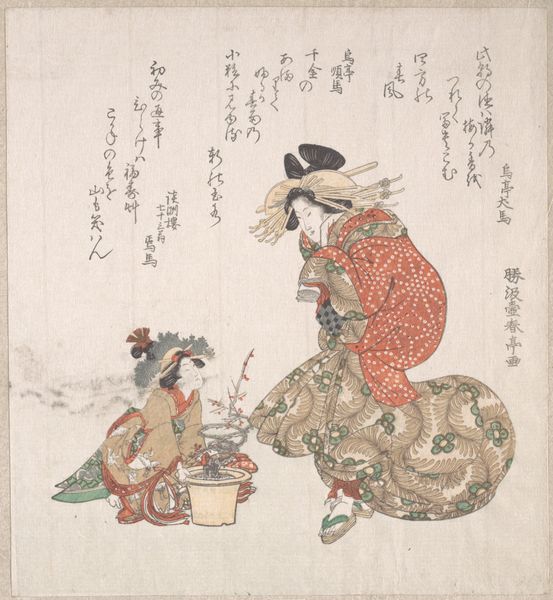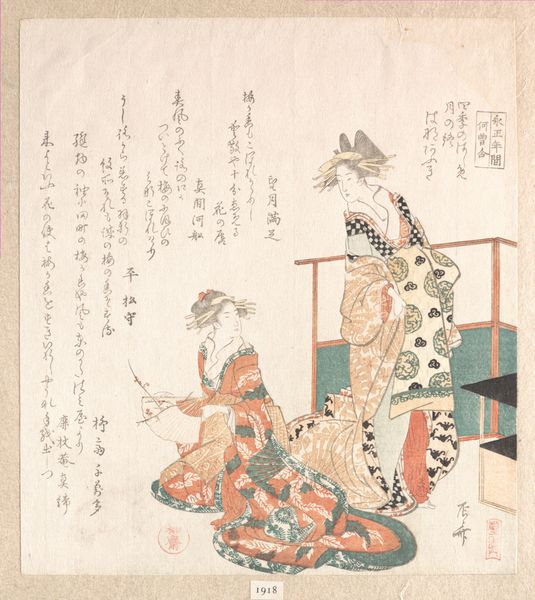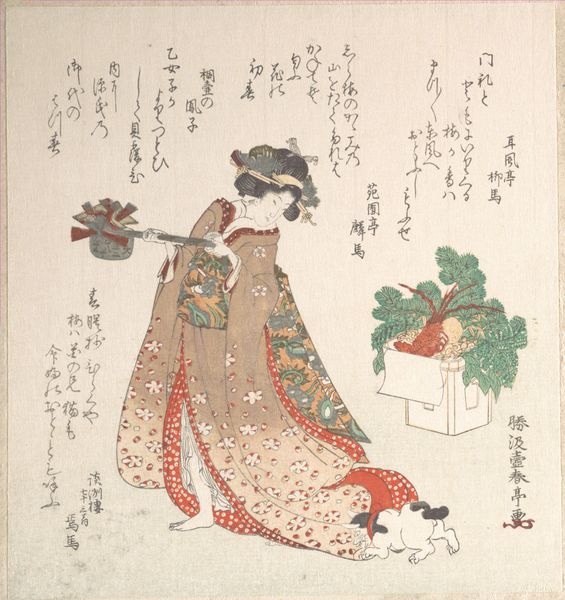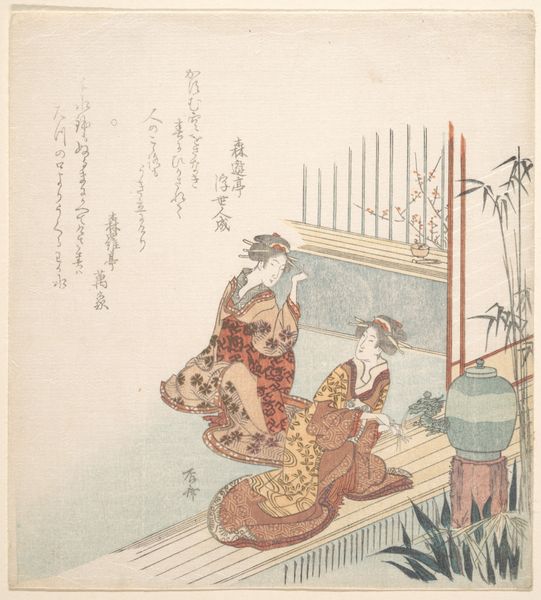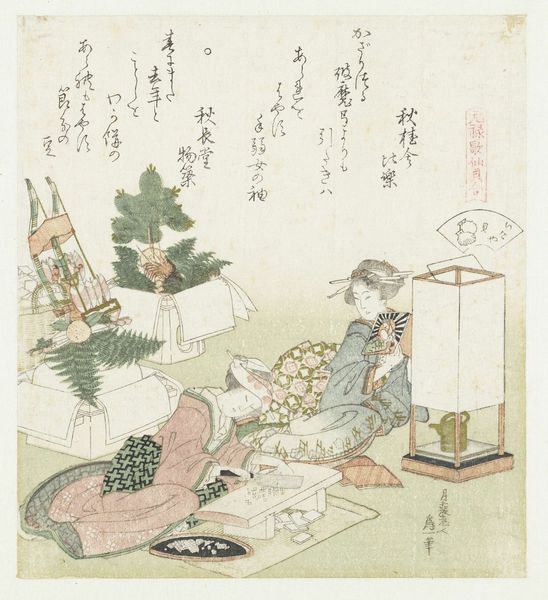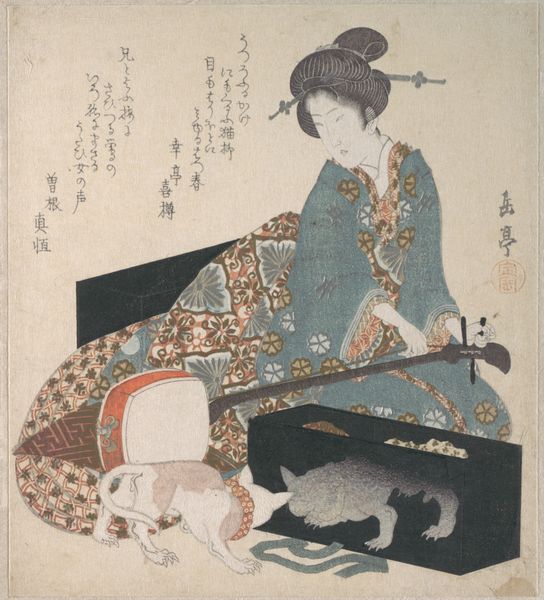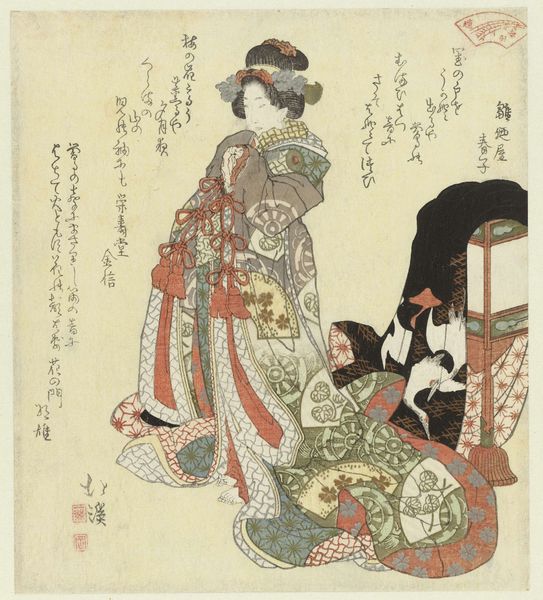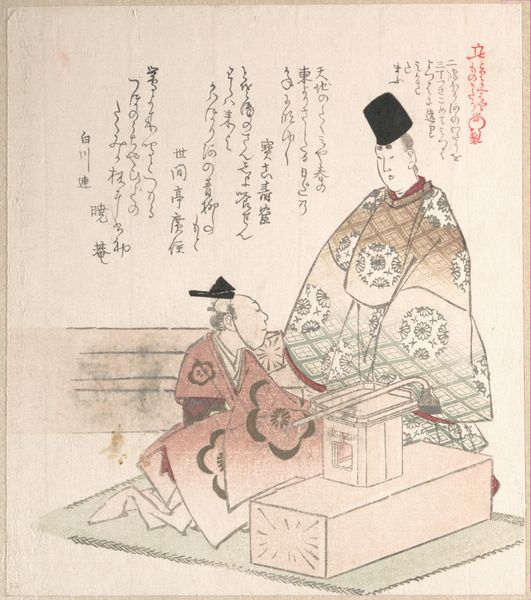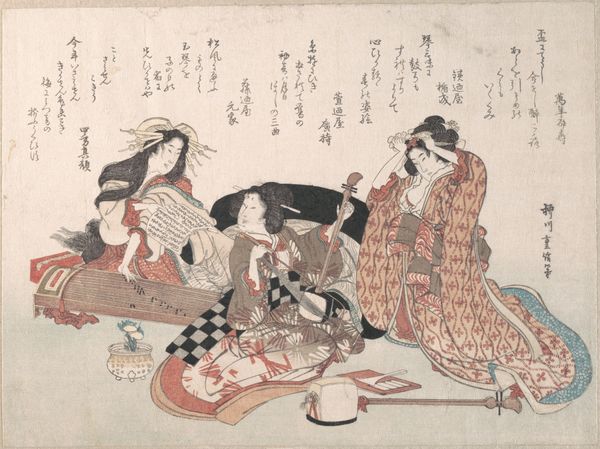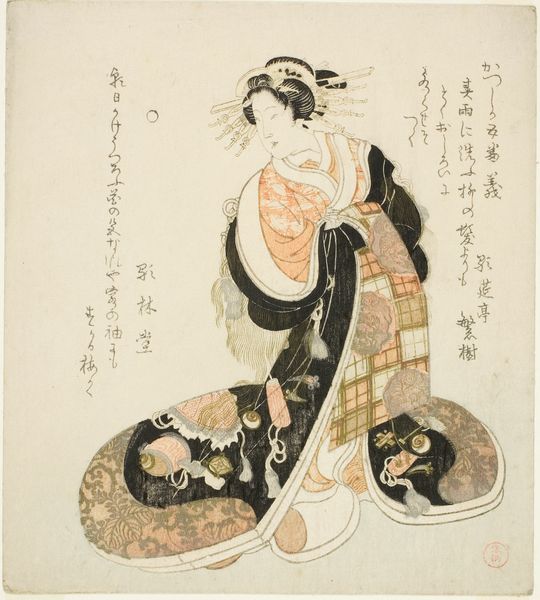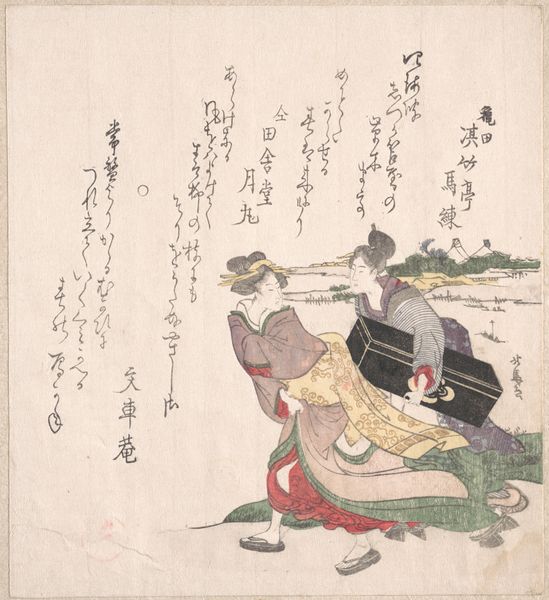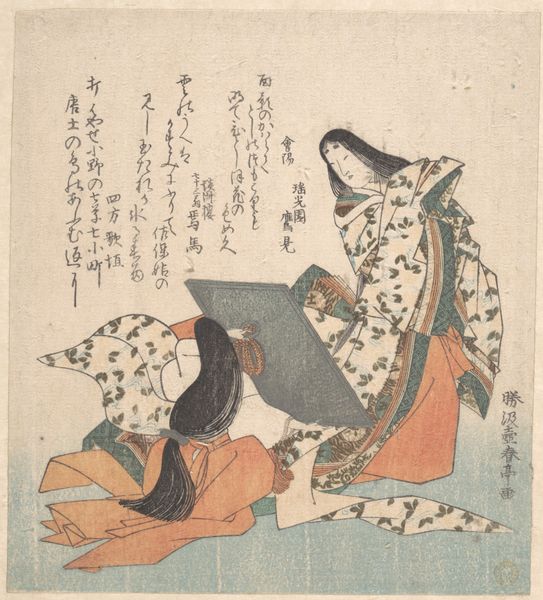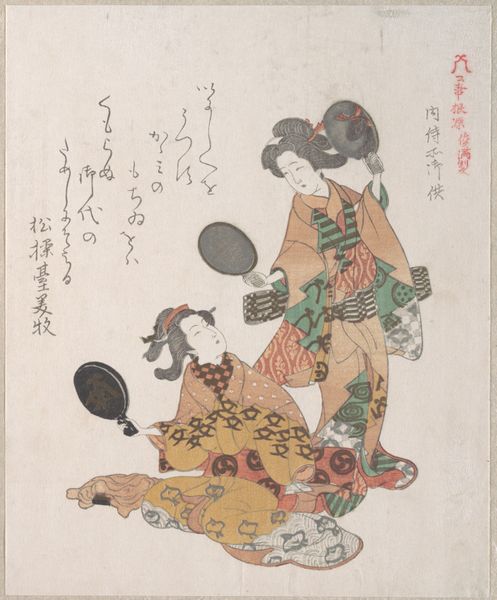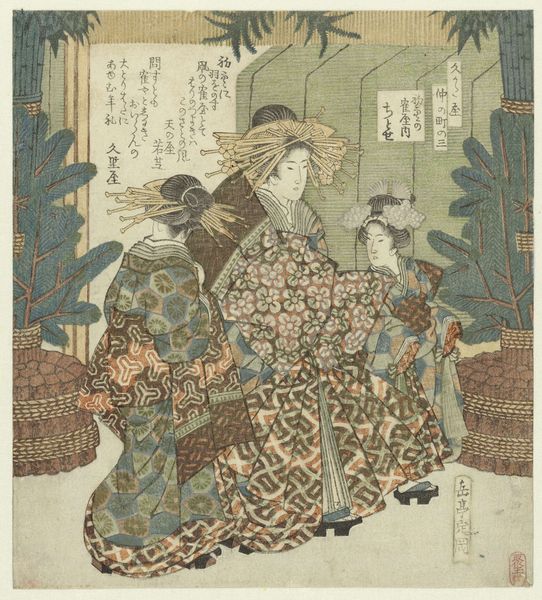
Dimensions: 8 5/16 x 7 1/4 in. (21.1 x 18.4 cm)
Copyright: Public Domain
Curator: This is Utagawa Kuninao’s "Street Scene in the New Year Season," a woodblock print created around 1814, part of the Metropolitan Museum's collection. Editor: My first impression? It's incredibly charming, almost like a fleeting glimpse of everyday life. The textures in the robes are exquisite and there’s an energy to it despite its small scale. Curator: Absolutely. Woodblock prints like this one capture a profound connection to cultural memory, reflecting the visual language and iconography that resonated with people then and now. Look at the bamboo, for example, symbolizing resilience and longevity. Editor: But it also invites us to consider the social context of that time. Notice the positioning of the woman, the dog, the children... Are we seeing a comment on societal expectations? Perhaps regarding motherhood, protection, or even class distinctions? Curator: Interesting thought. While those aspects could be present, the primary aim seems to be representing New Year’s celebrations. The dog, after all, is one of the animals of the Chinese zodiac and possibly symbolic of the past year while also offering good luck for the upcoming year. Editor: I agree the dog could be connected with the passing year and luck in the new year, but it could also symbolize more universal ideas like loyalty and community within society, and as Kuninao carefully stages it, the artwork reflects what that means to specific social demographics. Curator: Consider, too, the calligraphy and inscription. Each element conveys meaning and feeling to create symbolic layers. Japanese calligraphy emphasizes spirituality, knowledge, and power through imagery. Editor: You’re right, and the fact that these images were popularized in print underscores the democratic nature of ukiyo-e; bringing art into the lives of ordinary people rather than solely catering to the elite. Curator: It does speak to the desire to engage people within these works. By imbuing ordinary objects and street life scenes with visual signs, they are continuously communicating with contemporary viewers, keeping them embedded in lived reality. Editor: It's powerful how this one image sparks so many lines of inquiry – about the artist’s intention, its reception then, and how it reflects our world today. Thanks for pointing that out! Curator: Indeed. It speaks volumes about our relationship to the image, now and then. Thank you!
Comments
No comments
Be the first to comment and join the conversation on the ultimate creative platform.
